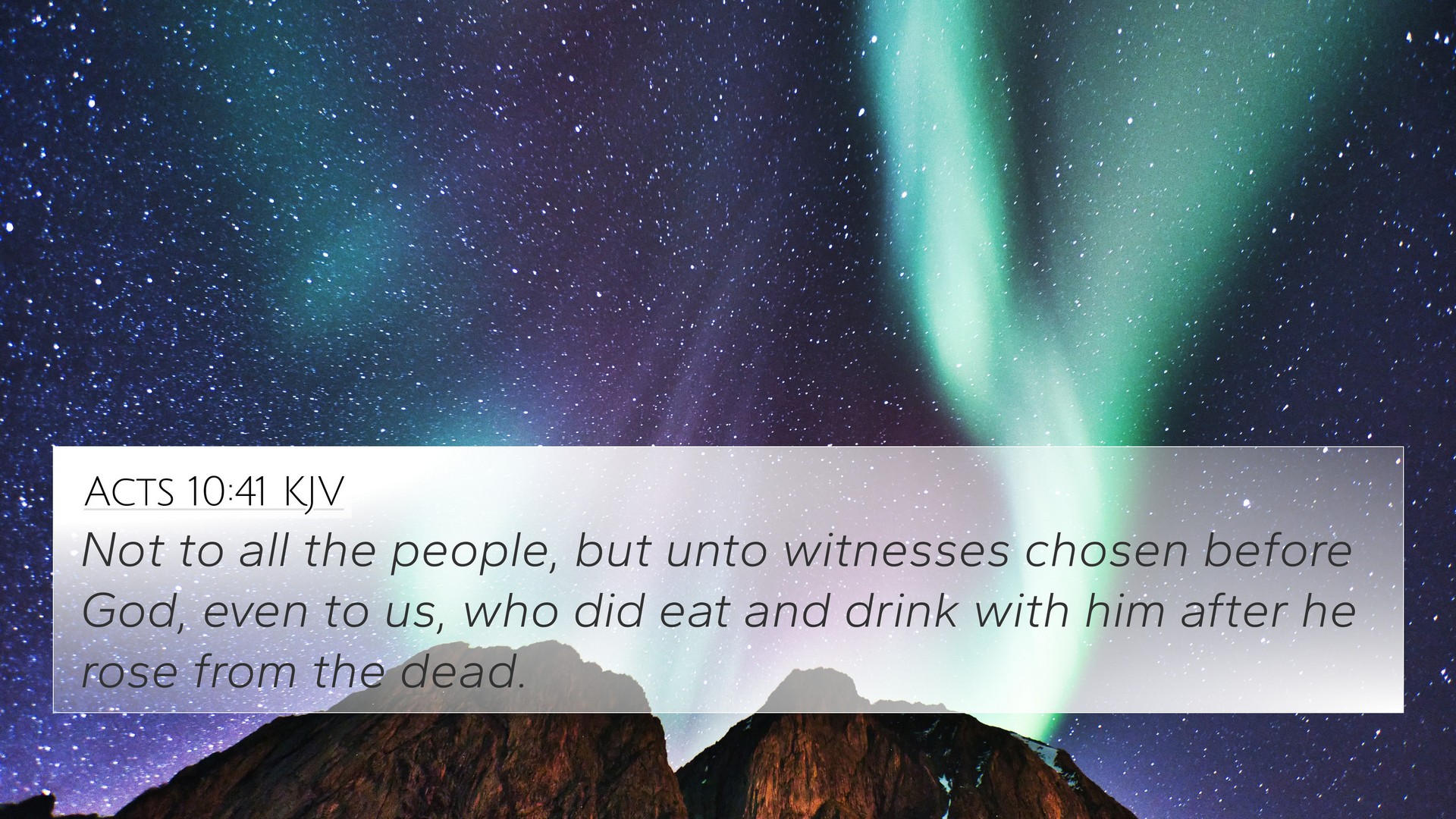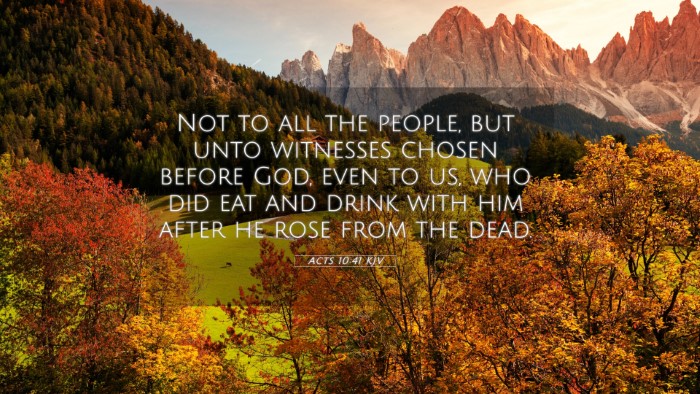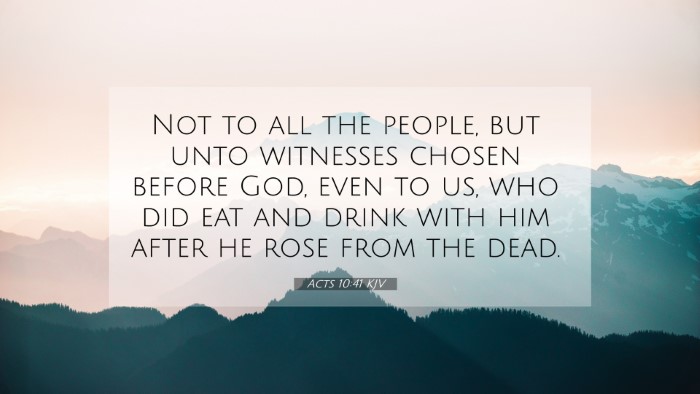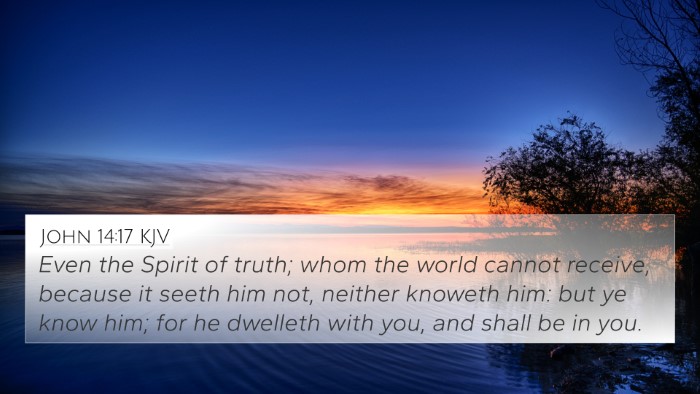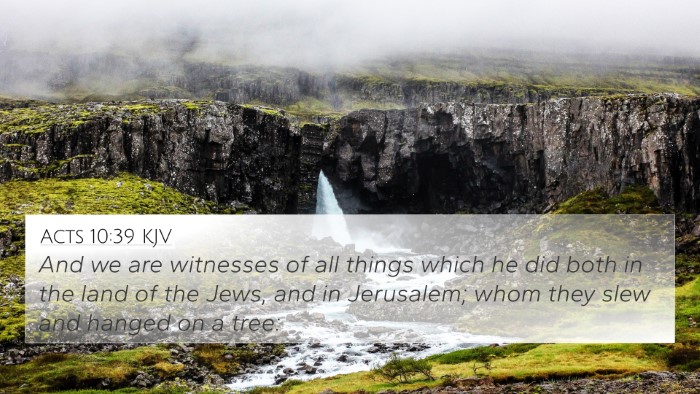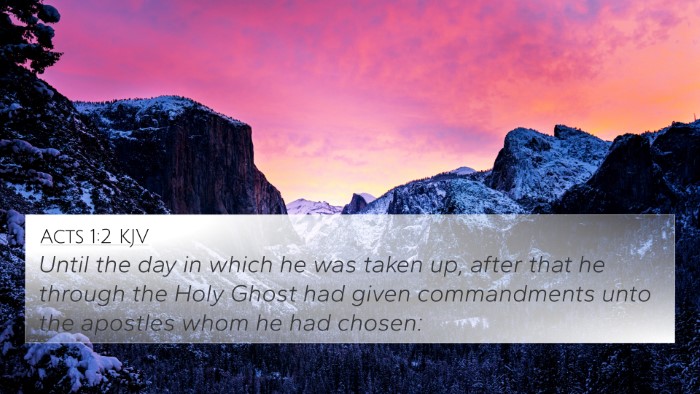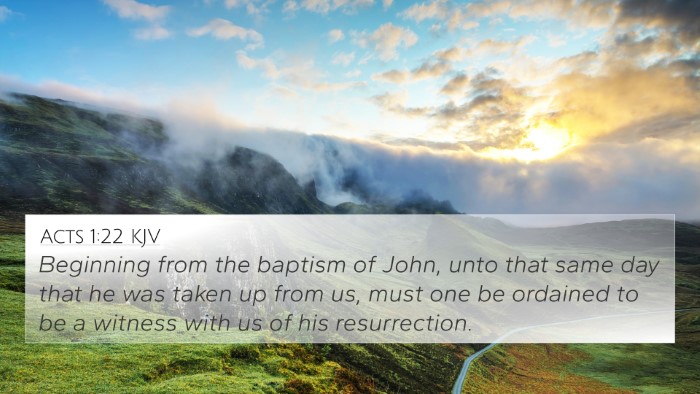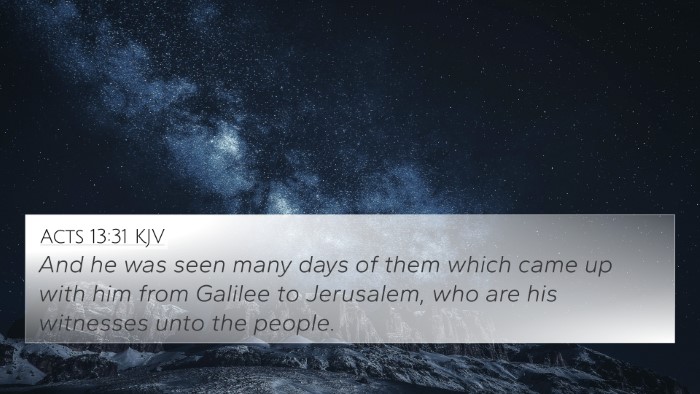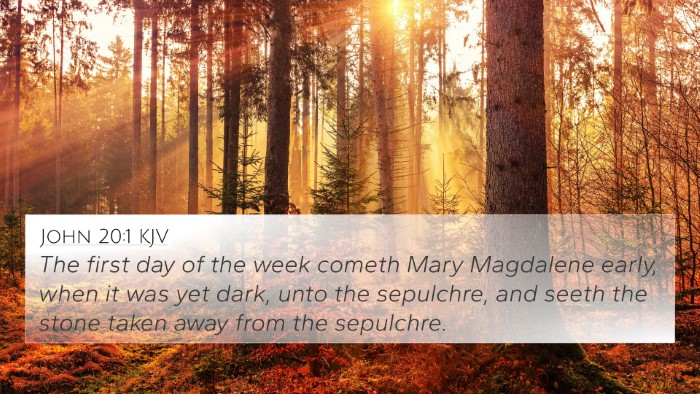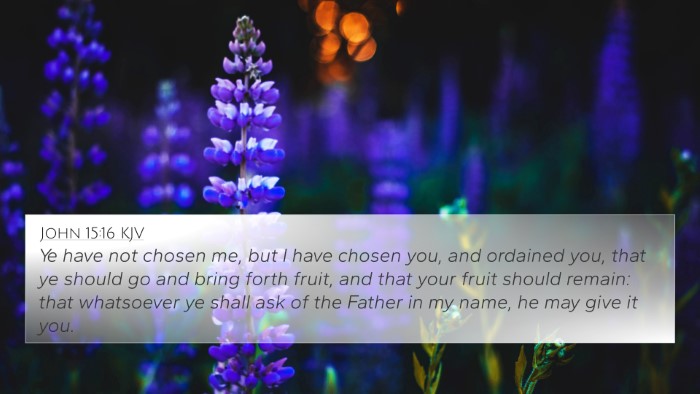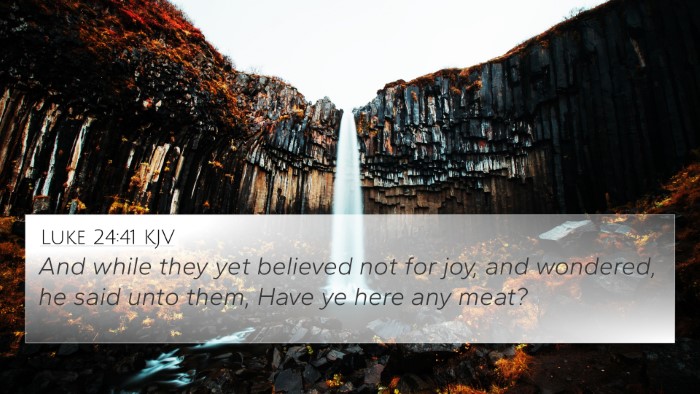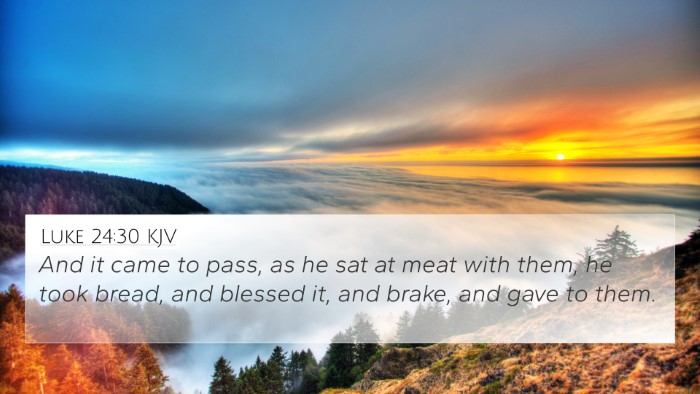Understanding Acts 10:41
Acts 10:41 states: "Not to all the people, but to witnesses chosen before of God, even to us, who did eat and drink with him after he rose from the dead."
Summary of Meaning
This verse highlights the significance of eyewitness testimony regarding the resurrection of Jesus Christ. It underscores that God selected specific witnesses who had a personal relationship with Jesus, and their experience of eating and drinking with him after his resurrection serves as a foundational proof of his bodily resurrection.
Insights from Public Domain Commentaries
Matthew Henry's Commentary
Henry emphasizes that the resurrection of Christ was not simply a spiritual occurrence but a physical reality witnessed by selected individuals. These witnesses were instrumental in spreading the news of Jesus' resurrection and served as reliable sources of testimony regarding His resurrection. The mention of "eating and drinking" indicates intimacy and a genuine connection, reinforcing the reality of Jesus' bodily resurrection.
Albert Barnes' Commentary
Barnes notes that this verse is crucial in the context of Peter's address to Cornelius and his household. The reference to "witnesses chosen before of God" points out God's foreknowledge and preparation for spreading the Gospel. The act of sharing a meal symbolizes fellowship, and this after-resurrection encounter signifies the establishment of a new covenant community that would witness to all nations.
Adam Clarke's Commentary
Clarke explains that the phrase "to us" personalizes the testimony of the resurrection, showing that the apostles were not only deliverers of a message but also direct participants in the events. He highlights the intent behind God’s choice of witnesses, indicating that their testimony was crucial for the eventual spread of Christianity, confirming the truth of the resurrection as a cornerstone of the faith.
Bible Cross References
- Luke 24:34 - "The Lord has risen indeed, and has appeared to Simon!" - This emphasizes the announcement of resurrection appearances.
- 1 Cor. 15:6 - "After that, he was seen by over five hundred brethren at once..." - Further proof of the many witnesses post-resurrection.
- Acts 1:3 - "To whom also he showed himself alive after his passion by many infallible proofs..." - This details the many evidences of the risen Christ.
- Mark 16:14 - "Afterward he appeared unto the eleven as they sat at meat..." - Confirmation of Jesus' fellowship with the apostles post-resurrection.
- John 21:12 - "Jesus said unto them, Come and dine..." - Jesus invites his disciples to a meal, signifying fellowship after resurrection.
- Matthew 28:10 - "Then said Jesus unto them, Be not afraid: go tell my brethren that they go into Galilee, and there shall they see me." - Reinforces the intentionality behind Jesus' post-resurrection appearances.
- Acts 2:32 - "This Jesus has God raised up, of which we all are witnesses." - Echoes the theme of eyewitness testimony regarding the resurrection.
Thematic Connections
The narrative depicted in Acts 10:41, along with the cross-references, forms a significant part of the early church's understanding of the resurrection, serving as a reminder of the importance of witness in the establishment of faith. The connections between this and other verses present a comprehensive view of the resurrection's impact on early Christianity.
Conclusion
Acts 10:41 is more than a historical account; it is a theological affirmation of the witnesses chosen by God to testify to the resurrection of Jesus. Their physical experiences not only validate Christ’s resurrection but also emphasize the significance of community and fellowship in faith. For those seeking deeper understanding, utilizing tools for Bible cross-referencing can enhance one's study of connections between Bible verses, revealing a more intricate narrative of faith throughout scripture.
Using Bible Cross-References Effectively
To fully appreciate the connections and themes presented in the scripture, it is beneficial to explore the interplay of verses through various methods:
- Utilize a Bible concordance to find references that link various books and themes.
- Engage in cross-reference Bible study to analyze how different scriptures support each other.
- Explore Bible chain references to see how one verse leads to another thematically.
- Consider a comparative study of Pauline epistles to identify cross-referenced experiences of resurrection throughout his letters.
- Reflect on inter-Biblical dialogue for a richer theological understanding of the resurrection narrative.
